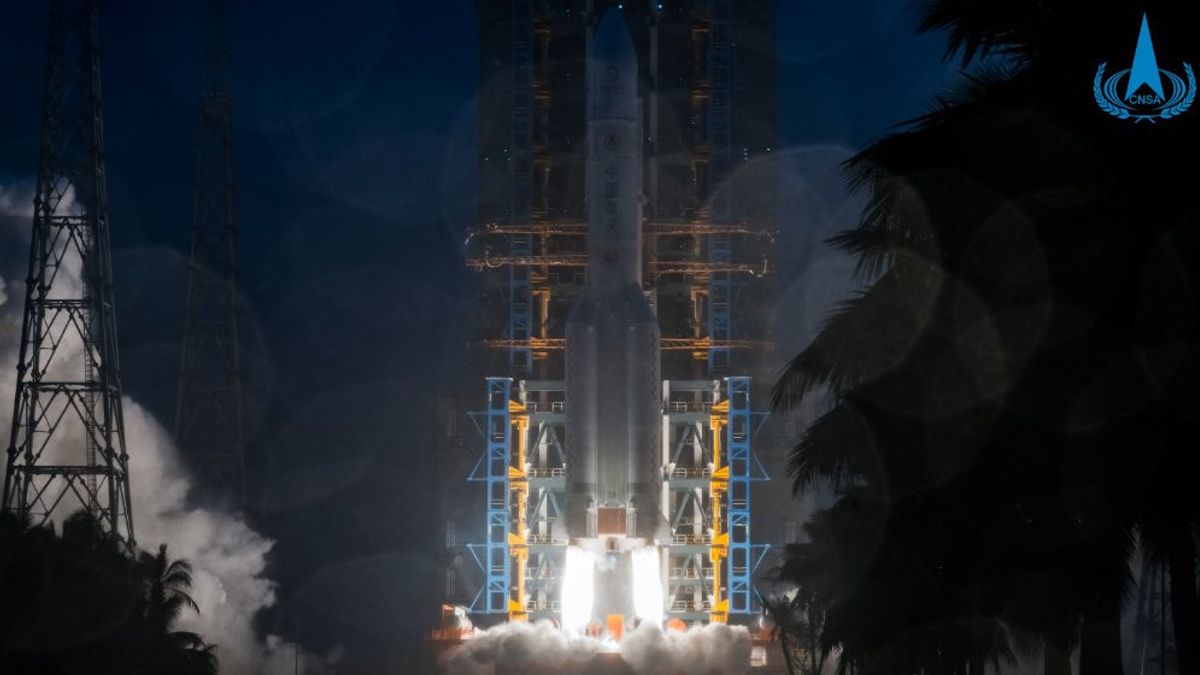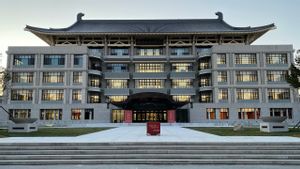JAKARTA - China has launched an unrivaled mission to land an aircraft orbiter on the far side of the Moon. The mission will also return samples that can provide insight into geological differences and others between poorly explored areas and better known sides.
Chang'e 6 took off using a Long March 5 rocket from China's Wenchang Satellite Launch Center off the southeast coast of mainland China at around 10.00 p.m. BST.
This unprecedented mission will be the latest advancement in China's increasingly sophisticated and ambitious space exploration program that is now competing with the US, which is still a leader in the space sector.
China has landed a rover on the far side of the Moon in 2019, becoming the first country to do so.
Without exposure from Earth and other disturbances, a rather mysterious side of the ideal Moon for radio astronomy and other scientific work. As the far side never faces Earth, a relay satellite is needed to maintain communication.
The exploration probe of the Moon Chang'e is named after the goddess of Chinese myth.
In 2020, China returned samples from the near side of the Moon. This is the first time a mission has been able to do so since the US Apollo program ended in the 1970s.
Analysis of the sample found that the objects contained water in small grains embedded in the lunar soil.
China has built its own space station after being excluded from the International Space Station, the ISS, largely due to US concerns over China's military's total control over space programs amid increasingly fierce competition in technology between the two geopolitical rivals.
The US law prohibits almost all cooperation between US and Chinese space programs without explicit approval from Congress.
China's ambitious space program aims to put astronauts on the Moon by 2030, as well as bring back samples from Mars around the same year and launch three Moon orbiting missions in the next four years. The next one is scheduled for 2027.
The long-term plan proposes to build a permanent base on the Moon's surface, although it appears to remain in the conceptual phase.
China carried out its first manned space mission in 2003, becoming the third country after the disbanded Soviet Union and the US managed to send people into space using its own resources.
Tiangong three modules, much smaller than the ISS, launched in 2021 and completed 18 months later. It can accommodate up to six astronauts at once and is mostly dedicated to scientific research.
SEE ALSO:
The crew will also install space debris protection equipment, conduct payload experiments, and broadcast science classes to students on Earth.
China also said that it was ultimately planning to offer access to their space station to astronauts and foreign space tourists. With the ISS approaching its end of life, China could eventually become the only country or corporation guarding a manned station in orbit.
The US space program is believed to still have a significant advantage over China due to its spending, supply chain, and capability.
The US aims to send the crew back to the Moon's surface by the end of 2025 as part of a new commitment to manned missions, assisted by private sector players such as SpaceX and Blue Origin.
They plan to land at the Moon's south pole where the shadow-covered crater is believed to be full of frozen water.
The English, Chinese, Japanese, Arabic, and French versions are automatically generated by the AI. So there may still be inaccuracies in translating, please always see Indonesian as our main language. (system supported by DigitalSiber.id)


















